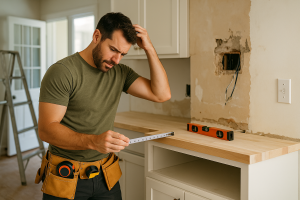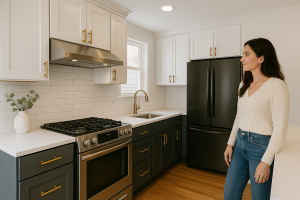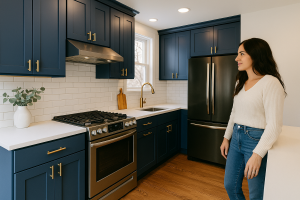
How to Set a Realistic Budget for Your Home Remodel

Table of Contents
Remodeling your home is an exciting journey, but one that requires careful financial planning to ensure a smooth and successful transformation. Defining a clear budget is essential to avoid unexpected costs and to make your dream renovation a reality. Follow this step-by-step process to create a well-structured and realistic budget:
- Define Your Goals and Priorities
Before diving into the numbers, take time to clarify your remodeling goals. What do you want to achieve? Whether it’s upgrading the kitchen, modernizing the bathroom, or finishing the basement, identifying the areas that matter most will help you prioritize your budget accordingly. Make a list of your must-haves versus nice-to-haves, and assess where you can compromise. - Research Costs
To get an accurate idea of what your project might cost, begin by researching. Browse through home improvement magazines, visit local hardware stores, or consult with contractors. Online resources can also provide valuable insight into average costs for materials and labor. This will help you set a realistic expectation for your remodeling expenses. - Evaluate Your Financial Resources
Understand your financial situation by reviewing your savings, potential loans, or credit options. Consider how much you’re comfortable spending and whether you’ll need additional financing to cover the costs. Being transparent about your financial resources ensures that you set a budget that’s achievable. - Consult with Experts
For significant remodeling projects, it’s wise to consult with professionals like architects or contractors who can provide precise estimates. Their expertise will help you identify hidden costs and give you a more accurate picture of the overall budget. This is crucial for larger, more complex renovations. - Create a Detailed Task List
Break down your project into specific tasks, such as demolition, electrical work, plumbing, and finishes. This level of detail will help you get accurate quotes from contractors and give you a clearer understanding of what’s involved. It also helps prevent overlooking any important elements of the remodel. - Include a Contingency Fund
Unexpected challenges, like hidden structural issues or design changes, are a common part of remodeling projects. Set aside 10-15% of your total budget for contingencies. This ensures you have room to address any surprises without derailing your plans. - Prioritize and Adjust
If your estimates exceed your available budget, don’t worry—there’s room to adjust. Prioritize the most critical aspects of your project and consider breaking it up into phases. This approach allows you to manage costs while still achieving your long-term vision. - Get Multiple Quotes
When hiring professionals, always get at least three quotes for each task. Having a range of estimates will help you make an informed decision based on both cost and quality. It also allows you to compare contractors and choose the one that best fits your project. - Set Your Final Budget
Once you’ve gathered all estimates and reviewed your finances, set a final budget that you’re comfortable with. This budget should reflect both the cost of materials and labor, as well as your contingency fund. Make sure to include a bit of flexibility to accommodate unforeseen costs. - Track Your Spending
During the remodel, keep a detailed record of all expenses. This helps ensure you stay within your budget and allows for quick adjustments if necessary. Regular tracking keeps your financial plan on course and avoids overspending. - Consider Quality and Long-Term Value
When allocating your budget, remember that a lower cost option isn’t always the best choice. Balance cost with quality and long-term value. Choose materials and products that offer durability and style, as this will improve the longevity of your remodel and enhance your home’s value. - Save for Future Maintenance
Once your remodel is complete, continue to save for future maintenance and updates. Home improvements are an ongoing process, and having a financial cushion for future projects ensures your home remains in top condition.
A well-planned budget is your roadmap to a successful remodel. By carefully assessing your goals, resources, and potential costs, you can ensure that your home transformation is not only beautiful but also financially sound. Let us help you turn your vision into a reality, with thoughtful budgeting every step of the way.
Tags :
Share :
Latest Post


🛠️ Mixing Metals in the Kitchen: A Guide to Modern, Functional Design
13 November, 2025
No Comments

Steal-Worthy Kitchen Transformations: Inspiration from Real Renovations
7 November, 2025
No Comments

Home Renovations That Can Lower Your Resale Value—And How to Avoid Them
5 November, 2025
No Comments
